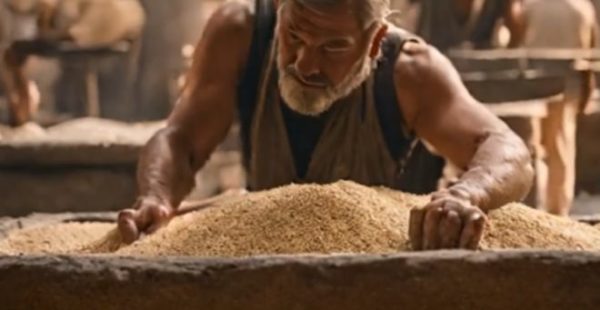
The better we live, the more we lose touch with the real world, which often lives poorly. We tend to perceive the living conditions of people in the distant past as brutal. However, if we look more closely around us on a global scale, we will notice that certain things do not change, and the saying “your worth is as much as you have” or “you are not worth” still holds true. As long as this is the case, there will be brutality. We do not intend to belittle the suffering of the past world, just to give it a different and more realistic dimension.
During archaeological excavations this year in 2023 in Pompeii, in Regio IX, the remains of a rich house were found, consisting standardly of a part for comfortable living and a part for commercial use. In the enclosed part of the mill near a large furnace, there was a small space where a man and an animal worked together.

A real hell
The space was dark, and a small amount of light came from small and high-set windows that were closed with grates. From the furnace nearby, this space was hot, which was okay in winter, but in summer, it was a real hell. The people who worked here were slaves, and they used donkeys as well.
It is assumed that both humans and animals alternated frequently, almost like on an assembly line, due to the harsh living and working conditions. The room had depressions at the bottom that were intentionally made to limit and strictly guide movement. The slave had to ensure that the animal moved and, in addition, supervise the quantities of grain and flour, i.e., prepare the grain for grinding and store the flour, all to avoid idle work.

Man and animal had to get used to the harsh conditions of work and life. It was a relationship permeated with violence in which the slave projected the relationship with a superior person onto the animal. The Roman writer and philosopher Apuleius wrote his most famous work in the 2nd century, which perhaps best depicts the life of slaves and animals in mills at that time. In the part titled “Metamorphoses” or “The Golden Ass,” he described the harsh realities in these spaces. According to his writing, the skin of these workers was “marked with reddish wounds,” “foreheads branded,” and “legs bound in chains.” The situation was no better for donkeys, on the contrary. They sadly walked in circles for hours. Their hips were “bruised to the bones” from beatings, “hooves deformed,” “skin covered with mange,” and “inflamed from hunger.”
The lives of ordinary people will soon be presented in a new exhibition in Pompeii called “Other Pompeii: Ordinary Life in the Shadow of Vesuvius.” The exhibition opened yesterday, December 15, 2023. Its goal is to present the lives of the largest number of people who did not belong to the privileged class. These ordinary people, as always, are less interesting to the public, but they were the driving force behind this vast and enduring empire.
Sonja Kirchhoffer